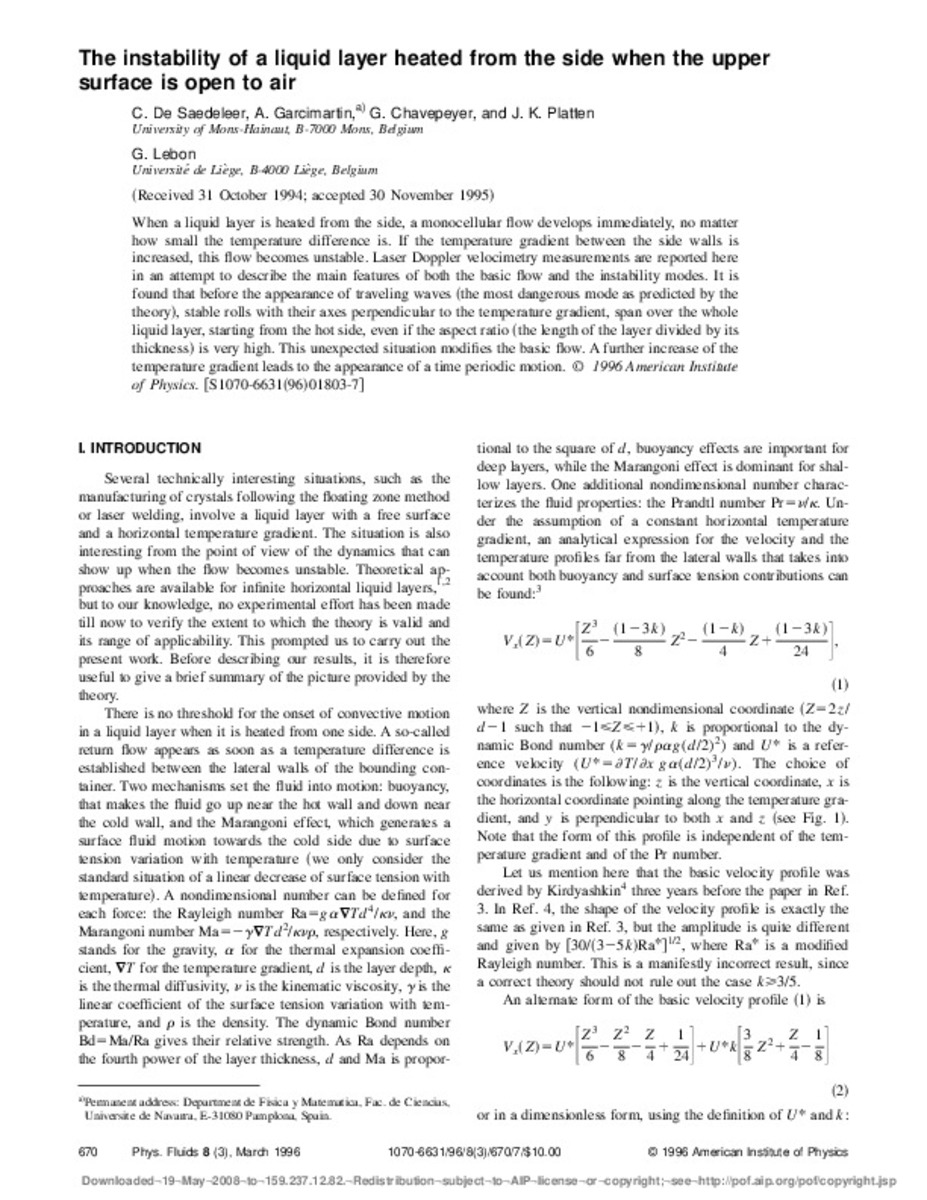Full metadata record
| DC Field | Value | Language |
|---|---|---|
| dc.creator | Saedeleer, C. (C.) de | |
| dc.creator | Montero, Á. (Ángel) | |
| dc.creator | Chavepeyer, G. (G.) | |
| dc.creator | Platten, J.K. (J.K.) | |
| dc.date.accessioned | 2008-05-22T13:54:16Z | - |
| dc.date.available | 2008-05-22T13:54:16Z | - |
| dc.date.issued | 1996-03 | - |
| dc.identifier.citation | Phys. Fluids, Vol. 8, N 3. 670-676 | es_ES |
| dc.identifier.uri | https://hdl.handle.net/10171/2531 | - |
| dc.description.abstract | When a liquid layer is heated from the side, a monocellular flow develops immediately, no matter how small the temperature difference is. If the temperature gradient between the side walls is increased, this flow becomes unstable. Laser Doppler velocimetry measurements are reported here in an attempt to describe the main features of both the basic flow and the instability modes. It is found that before the appearance of traveling waves ~the most dangerous mode as predicted by the theory!, stable rolls with their axes perpendicular to the temperature gradient, span over the whole liquid layer, starting from the hot side, even if the aspect ratio ~the length of the layer divided by its thickness! is very high. This unexpected situation modifies the basic flow. A further increase of the temperature gradient leads to the appearance of a time periodic motion. © 1996 American Institute of Physics. | es_ES |
| dc.language.iso | eng | es_ES |
| dc.rights | info:eu-repo/semantics/openAccess | es_ES |
| dc.title | The instability of a liquid layer heated from the side when the upper surface is open to air | es_ES |
| dc.type | info:eu-repo/semantics/review | es_ES |
Files in This Item:
Statistics and impact
Items in Dadun are protected by copyright, with all rights reserved, unless otherwise indicated.






